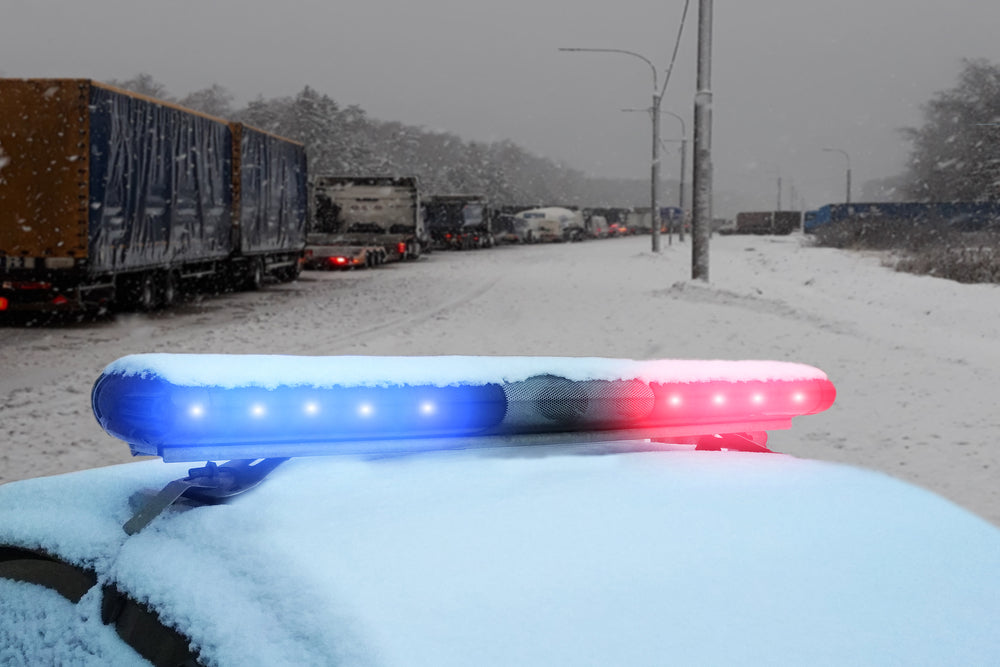
Winter Care and Use Tips for Emergency LEDs
As we enter the winter period around the country, many individuals or entities are considering how cold weather, snow and related elements will impact their driving conditions and connected areas. One great example here is any first responder who utilizes emergency lights as part of their vehicle setup – some basic are and use tips during winter can often be quite helpful for those in this position.
At LED Equipped, we’re proud to stock an unmatched range of emergency LED lighting options, including light bars, mini light bars, dash lights, hideaway lights and numerous others. While products like ours are made for extreme weather conditions and are meant to be able to stand up to any kind of winter elements that may come your way, some basic care and use tips will help them be as effective as possible this season – with as little hassle to you as possible, as well. Here are some general tips from our professionals.
Early Winter Checks
As we’re still in the relatively early stages of winter, it’s a good idea to run a few basic checks on your vehicle, its lights and related areas. Some good examples include:
- Lights are working: Naturally, one of your first checks should be to ensure all emergency lights are fully functional and shining as brightly as needed. Make sure mirrors are also cleaned off so you can see if any bulbs have burned out.
- Battery check: A car battery that’s old or on the brink of failure can be exposed in cold temperatures, making winter an easy time for a dead battery. You can have your local auto shop do a check on the battery, or consider replacing it if it’s nearing the end of its lifespan.
- Brightness: LEDs are known for maintaining their brightness even in cold temperatures, but it’s still a good idea to check that they’re shining just as bright as ever. If not, contact us about a potential replacement.
- Clean lenses: It’s easy for snow or ice to build up on your emergency lights and reduce their effectiveness – do a quick cleaning here before you need them.
- Obstructions: If your exterior lights have any obstructions, this is the time to clear them. This includes snow or ice on the lenses, but also covers things like leaves or twigs that may have accumulated during the fall.
- Fuse test: If you’re capable of checking and changing vehicle fuses, this is a good time to do so. Just be sure to use the right amperage for your particular lights.
Upgrade Halogens
One quick note here for any emergency responder who still uses halogen lighting: It may be time to upgrade. LED lights have largely surpassed halogens in terms of longevity, brightness and other areas, and the same goes for cold weather use. If you’re tired of constantly changing your bulbs every winter, it’s time to make a switch – our team will be happy to assist you with this process.
In fact, this process may be far less expensive and arduous than you might think. We’re happy to offer information on upgrade options and costs for any interested clients.
Insulating Against Cold
There are a few areas that might require insulation or other protections in cold weather, especially if temperatures drop significantly where you live. Make sure your vehicle is properly insulated against the elements, including all emergency lights and their connections.
For instance, if you use interior lights in the back of your vehicle, make sure they’re insulated from the cold. Foam or other types of insulation can help prevent condensation buildup on lights themselves, which may cause them to work less effectively.
Heated Lenses
Again, LEDs themselves are built to withstand cold temperatures – the options you purchase from us at LED Equipped, in particular, are rated for any such extreme. But it’s important to remember that your vehicle itself may experience issues related to cold weather, such as ice buildup on lenses.
One simple solution our clients have found here: Purchasing heated lens covers. These are relatively inexpensive, easy to install and will help ensure your lenses are clear at all times during the season.
In other cases, you might consider lens covers to place on the vehicle when it’s not in use – this will protect the lenses from any freezing rain or other elements, but still allow you to have quick access when necessary.
Basic Light Cleaning
Every so often, and maybe a bit more frequently during winter due to the combination of snow and road salt, be sure to clean your lights. This helps prevent any potential buildup that might reduce their effectiveness. Simple soap and water is usually fine for this purpose.
As you’re doing this, be sure to check the casing around your lights for any signs of damage or wear, particularly if you’ve had them a few years. If there’s rust or other signs of corrosion building up, contact our team and we’ll help advise you on potential next steps.
Emergency Lighting Maintenance
Finally, always be sure to keep up on general maintenance areas that may impact emergency lights, such as keeping the battery in good condition and maintaining any lens casings. This, combined with the tips we’ve gone over here, will help ensure your emergency lights are functioning properly all winter long. Going above and beyond these maintenance tasks can also increase the longevity of your emergency lights, ensuring they’ll be ready to go for any future emergencies you may encounter.
At LED Equipped, we pride ourselves on providing top-quality emergency LED lighting solutions that are built to last. With the tips we’ve provided here, your lights will be ready for any winter conditions you may face. Contact our team today if you have any further questions or concerns about maintaining your emergency lights this season.

